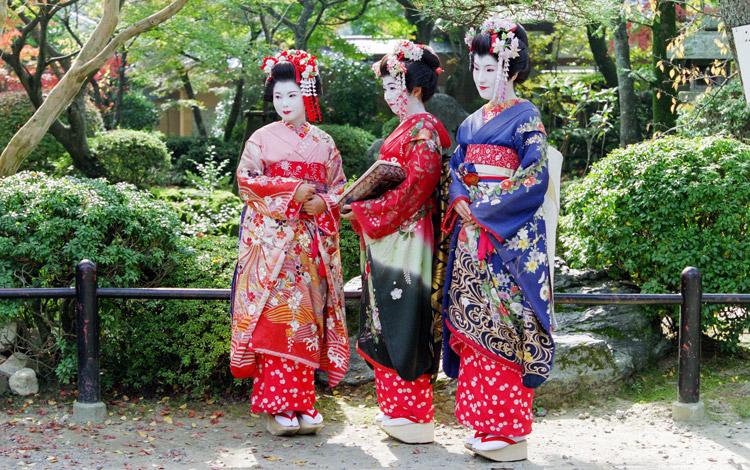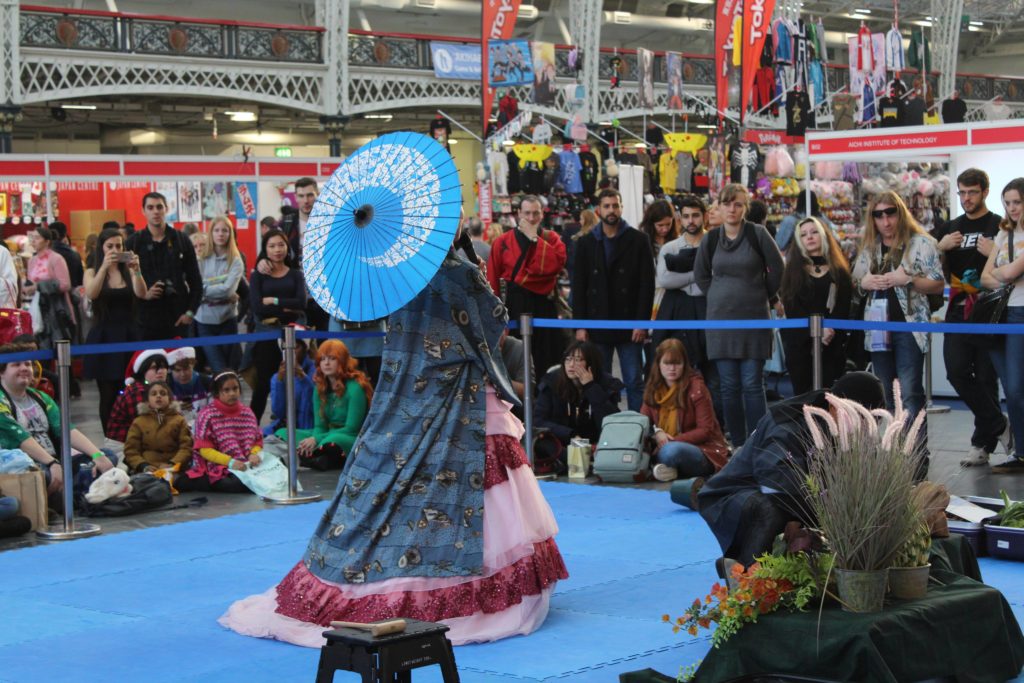In the 21st century Britain, kimonos (of sorts) are commonplace on the high-street and a fashion favourite for many. But have you ever wondered about their history? When they first arrived in Britain, and why? Thanks to a recent talk, ‘Abandoning the Kimono,’ hosted by Elizabeth Kramer and Allie Yamaguchi at the Daiwa Foundation, you’re about to find out!
During the Meiji period in Japan (1868-1912) the kimono emerged as a symbol of traditional Japanese culture in Britain obsessed with romanticised depictions of the Far East. This increased interest in the kimono as a fashion item was enabled by the abandonment of a 200-year-long Japanese isolation policy in 1868, which saw Japanese exports (and with it a taste of Japanese culture) reaching Britain for the first time.

Elizabeth Kramer suggests that it was in the context of a period of rapid industrialisation in Britain that encouraged such significant interest in traditional Japanese culture. Aware of this, exporters and retailers offered up the idea of Japan to consumers, with the kimono proving most popular.
Kimonos increasingly featured in the collections and catalogues of fashion houses, including Liberty’s in 1900 and Harrods a few years later. The depiction of kimonos in these publications helped to reinforce the idea that, in addition to traditional culture, kimonos embodied social ideals of femininity and domesticity.

Whilst kimonos were, in the minds of British wearers, linked to Eastern tradition and culture, the evident lack of thought behind the manner in which they were worn suggests that this cultural appreciation existed only at surface level. Items were adapted for fashion purposes, often emblazoned with clichéd motifs and (more often) worn incorrectly.
Allie Yamaguchi suggests that the manner in which the kimono was worn in Britain often replicates that worn only by dead bodies in Japan, reinforcing the idea that British wearers were more interested in the idea of them being linked to traditional culture, rather than the reality.
As the kimono gained popularity in Britain, so too did European fashion in Japan, seen as a symbol of parity between East and West and simultaneously demonstrating a sense of unity amongst the Japanese people during a period of rapid social transition.
Ironically, it was not uncommon for British commentators to express disapproval towards this, as often expressed through satirical cartoons. Elizabeth Kramer suggests this disapproval was linked to a desire to maintain a strict divide between East and West; in addition to maintaining a sense of Western economic superiority and, of course, the romanticised image of ‘old’ Japan.












































